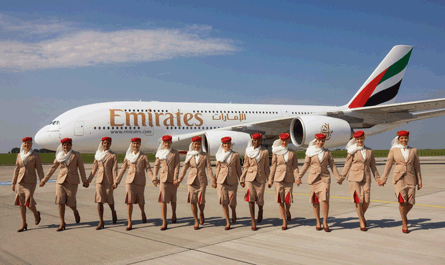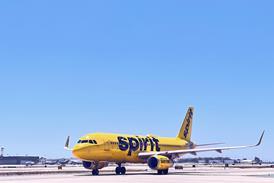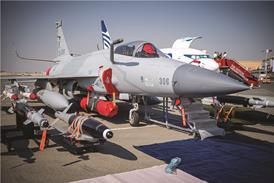The United Arab Emirates' two fast-growing network carriers - Emirates and Etihad Airways - are beginning to recruit again after a period of consolidation and a hiring freeze.
Dubai-based Emirates and Abu Dhabi-based Etihad had frozen headcounts as they sought to keep control of costs in the wake of significant declines in yield brought on by the downturn.
Emirates Airline's president Tim Clark says that the "economic meltdown" has resulted in "possibly a three- to five-year paradigm shift in the way yields have dropped".
The airline employs 27,000 people (including divisions that support other parts of the group) and has "been letting attrition take its natural course", he says. "We stopped recruiting cabin crew and put 2-3,000 on unpaid leave because we'd made an error in the maths and had too many, regardless of the meltdown."
 |
|---|
© Emirates |
Emirates ceased recruiting in February/March, but Clark says that with "growth, in terms of aircraft induction, continuing apacethe lines crossed in September and we're recruiting 494 cabin crew between now and February".
Similarly, flightcrew hiring has restarted, with Clark saying he has "just signed off 46 pilots".
Etihad chief executive James Hogan concurs with Clark that "the challenge all year has been yield". He adds: "We're seeing yields in some sectors pushed down to 2006-7 levels."
Hogan says that as revenue suffered in the face of yield declines the airline was able to "claw back more on costs in the second quarter, a big part of which was freezing headcount".
He confirms that the airline is now recruiting again, but "every job has to go through an HR review board and has got to be essential to the business".
Emirates is taking 22 widebodies in the current financial year ending on 31 March 2010. It will have a fleet of 15 Airbus A380s by the middle of next year.
Etihad is adding 11 single- and twin-aisle aircraft during the 2009 calendar year, but then enters a period of consolidation with only four additions in 2010 and four in 2011. Deliveries then begin in 2012 of the 100 aircraft ordered at last year's Farnborough air show.
Source: Flight International























